Exploring vocational education can open doors to rewarding careers, even without a high school diploma. Trade school programs offer practical training and skill development for various professions, making them accessible to many. In this article, we highlight the top five trade programs you can pursue without a diploma, along with insights on financial aid and frequently asked questions about trade schools.
1. Understanding Trade School Programs
Trade school programs offer an accessible pathway for individuals seeking vocational careers, often without the stringent requirements of traditional colleges. Many programs allow enrollment with alternative credentials, enabling those without a high school diploma to gain essential skills. These programs focus on hands-on training in specific trades, preparing students for immediate employment in fields like welding, plumbing, and cosmetology.
Typically lasting from a few months to a year, trade school programs emphasize practical skills tailored to specific job markets. While some programs may require a placement test to assess general knowledge, they generally do not necessitate college admissions tests like the ACT or SAT. Additionally, the U.S. Department of Education’s Ability to Benefit program provides financial aid options for eligible students, further enhancing access to vocational training.
2. Financial Aid Options Available
The U.S. Department of Education’s Ability to Benefit (ATB) grant program is a vital resource for students lacking a high school diploma or equivalent. This program provides financial aid to those pursuing careers in high-demand professions, although eligibility requirements can differ by state.
While some trade schools accept students without a high school diploma or GED, this can limit their access to various financial aid options. The ATB program enables these students to qualify for federal financial aid, including the Pell Grant, which can significantly alleviate educational costs.
To be eligible for the ATB program, students may need to demonstrate their academic readiness by passing a proficiency test or completing six credits toward an approved degree or certificate. This requirement ensures that students are prepared for the rigors of their chosen trade programs.
Many community colleges offer trade programs that welcome students without a high school diploma or GED, providing valuable opportunities for skill development. However, some states may still mandate a high school diploma or GED for licensing in specific trades, highlighting the importance of educational credentials in certain fields.
3. Welding: A Hands-On Career
Welding is an accessible skilled trade that many individuals can pursue through trade school programs, often without the need for a high school diploma. These programs focus on practical skills, allowing students to dive directly into the essential techniques of welding, such as fabrication and cutting processes. This hands-on approach equips students with the necessary expertise to thrive in the industry.
Trade school programs typically range from a few months to a year, providing concentrated training tailored to specific trades like welding. Unlike traditional college programs, which may include unrelated coursework, these programs emphasize the skills directly applicable to the trade. This focused curriculum helps students become job-ready more quickly, making welding an attractive option for those seeking immediate employment opportunities.
While some states may require a high school diploma or GED for certain welding positions, programs like the Ability to Benefit (ATB) allow students without a diploma to access financial aid if they meet specific criteria. This initiative opens doors for aspiring welders, enabling them to gain valuable skills and enter a rewarding career in a high-demand field.
4. Cosmetology: Beauty Without Barriers
Cosmetology offers a pathway to beauty that transcends barriers, allowing individuals to express their creativity through hairstyling, skin care, and manicures. Many states have flexible entry requirements, enabling aspiring beauticians and cosmetologists to pursue their passion without the necessity of a high school diploma. This accessibility opens doors for diverse talent in the beauty industry.
In cosmetology programs, students acquire essential skills such as:
- hair cutting
- styling
- providing skin care treatments
The curriculum often varies based on state licensing criteria and individual specialization, ensuring that practitioners are well-equipped to meet the needs of their clients. This dynamic field not only fosters personal expression but also promotes inclusivity and opportunity for all.
5. Massage Therapy: Healing Through Touch
Massage therapy utilizes skilled touch to manipulate muscles and soft tissues, offering numerous benefits such as pain relief, improved circulation, and enhanced relaxation. Practitioners must obtain a state license, with training covering techniques like hot stone therapy and reflexology, while some states allow entry without a high school diploma.
6. Certified Nursing Assistant Training
Certified Nursing Assistants (CNAs) play a vital role in healthcare, providing essential support to patients and assisting registered nurses or licensed practical nurses. Their responsibilities include personal care tasks such as bathing, dressing, and helping with mobility, ensuring patients’ comfort and dignity during their recovery or treatment.
While a high school diploma is not always mandatory for CNA training, obtaining one or a GED can enhance career prospects and facilitate further education in nursing. In various states, CNAs may also be known as certified nurse aides, but their training and responsibilities remain consistent across the board, emphasizing the importance of quality patient care.
- CNAs assist with daily living activities, ensuring patient comfort.
- Training programs may not require a high school diploma or GED.
- Many states mandate a diploma or GED for CNA licensing.
- CNAs work under the supervision of registered or licensed practical nurses.
- Career advancement opportunities exist for those who pursue further education.
7. Community College Trade Programs
Community colleges provide accessible trade programs that cater to a diverse range of students, including those without a high school diploma. These programs focus on vocational training in fields such as medical and dental assisting, culinary arts, and personal training. While general education classes are still part of the curriculum, the emphasis remains on practical skills that prepare students for immediate employment.
Typically lasting from a few months to a year, these trade programs offer a flexible pathway to career readiness. Community colleges often have lower GPA requirements and do not require standardized tests like the ACT or SAT for admission. Additionally, students can work towards their GED while enrolled in trade programs, making education more attainable for those seeking to enhance their job prospects.
8. Frequently Asked Questions About Trade Schools
Trade schools offer an accessible pathway to vocational careers, often allowing enrollment without a high school diploma. These programs focus on hands-on training and can be completed in a few months to a year, making them shorter than traditional degree programs. Financial aid options, like the Ability to Benefit program, help students without a diploma pursue their education and career goals.
In conclusion, there are several trade programs available for individuals without a high school diploma, including fields like beauty, massage therapy, technical trades, and culinary arts. While enrollment is possible, obtaining a diploma or GED may be crucial for future licensing and job prospects. Financial aid options may be limited, but programs like Ability to Benefit can help. Trade schools provide a practical pathway to gain skills and enter the workforce quickly.



